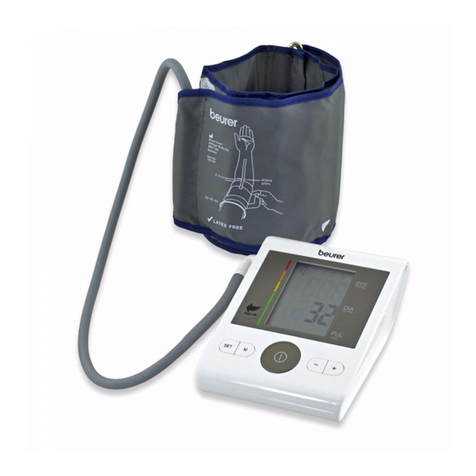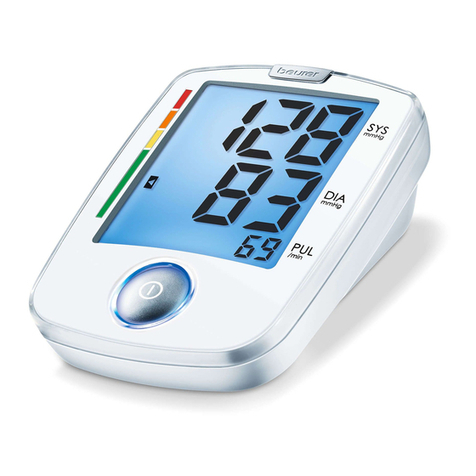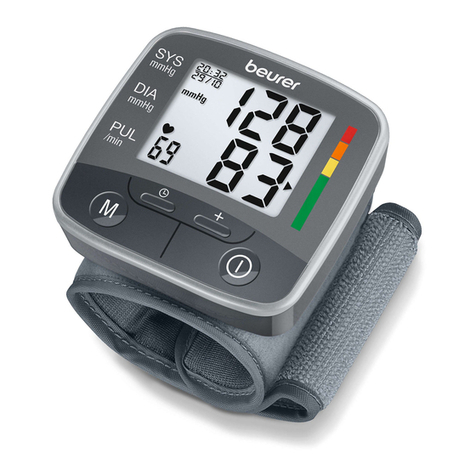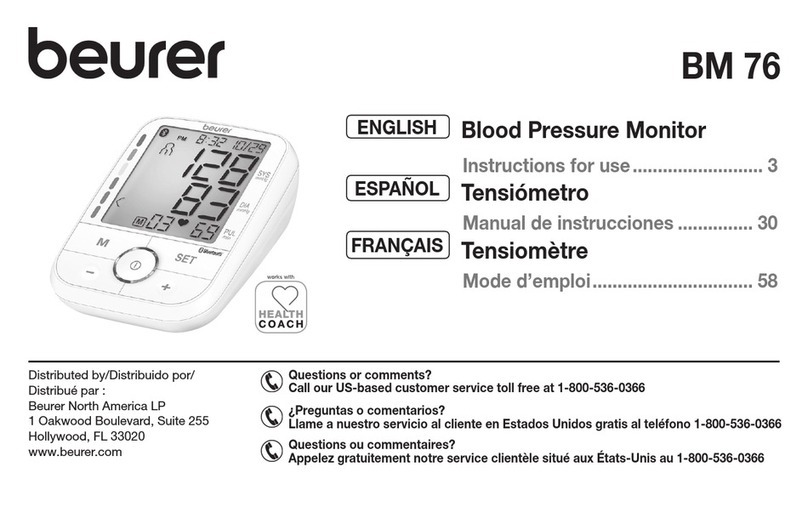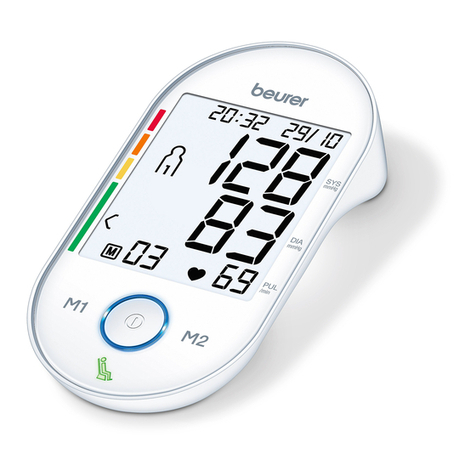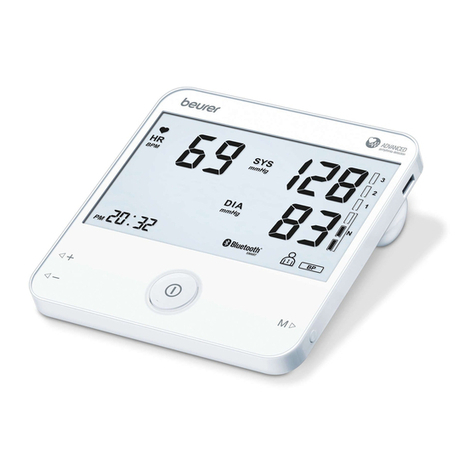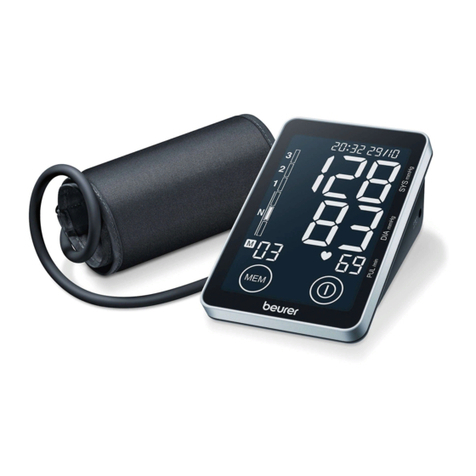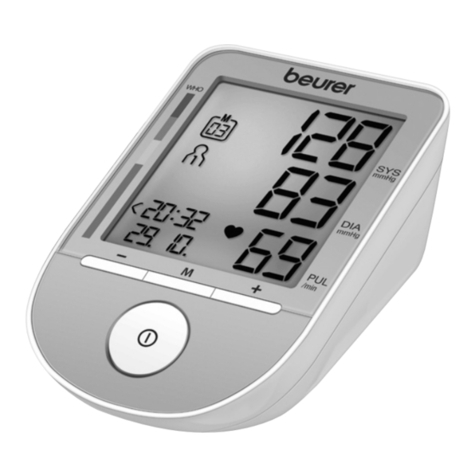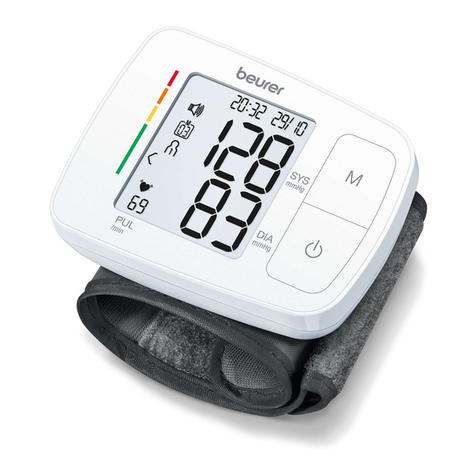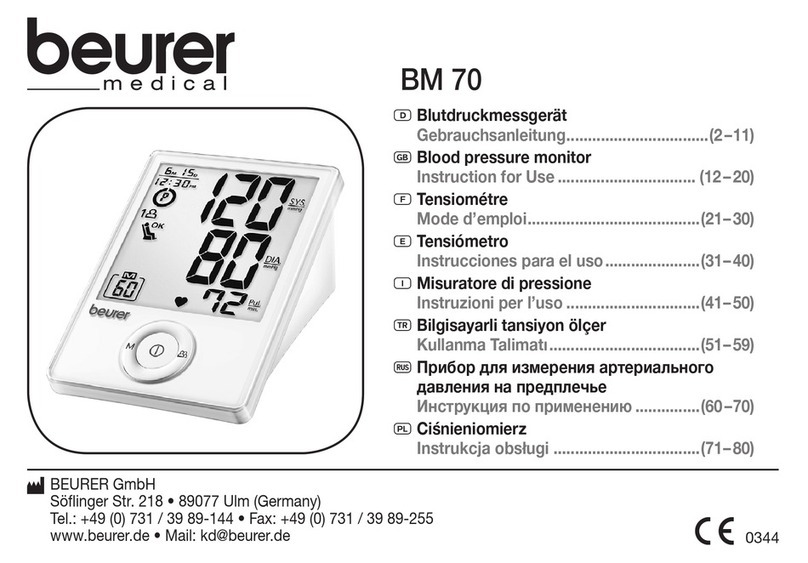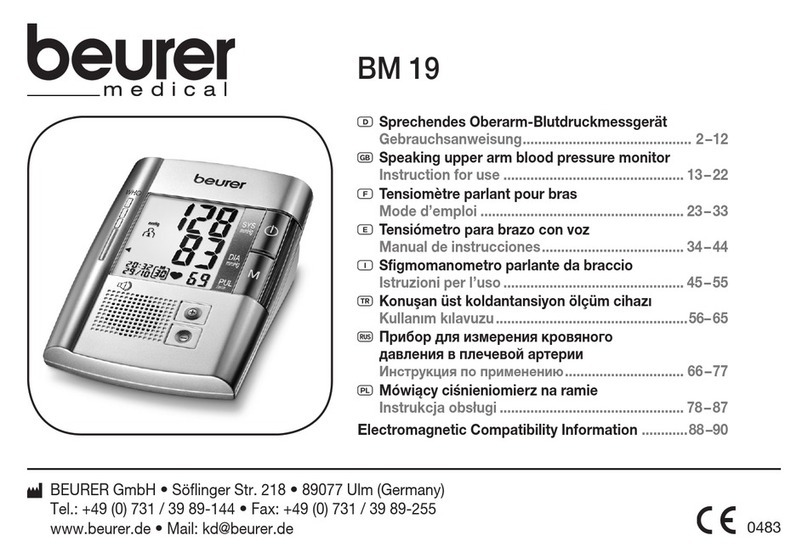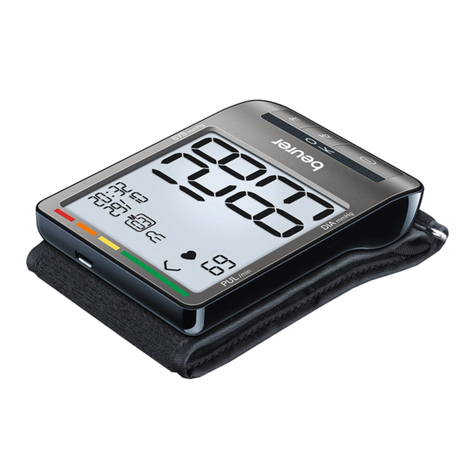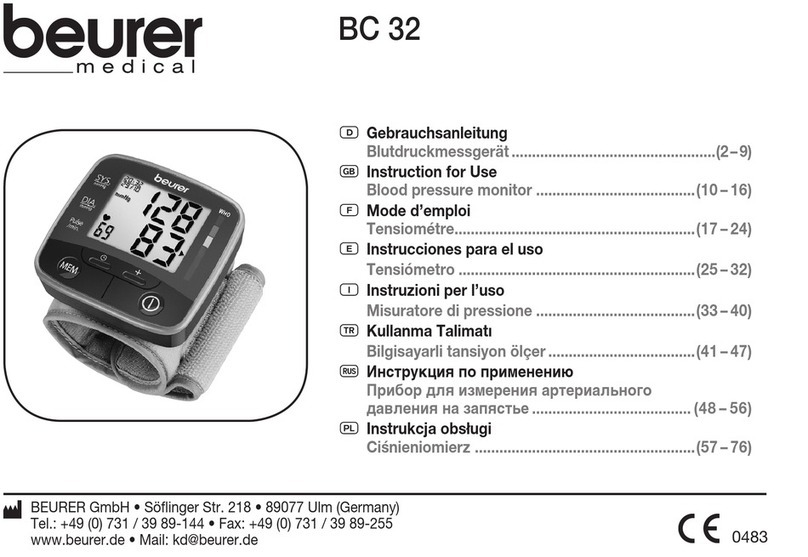
6
• Only use the cus included in delivery or cus described
in these instructions for use for the device. Using another
cu may lead to measurement inaccuracies.
• Note that when inflating the cu, the functions of the limb
in question may be impaired.
• Do not perform measurements more frequently than nec-
essary. Due to the restriction of blood flow, some bruis-
ing may occur.
• During the blood pressure measurement, the blood circu-
lation must not be stopped for an unnecessarily long time.
If the device malfunctions remove the cu from the arm.
• Place the cu on your wrist only. Do not place the cu on
other parts of the body.
General precautions
•
T
he blood pressure monitor is made from precision and
electronic components. The accuracy of the measure-
ments and service life of the device depend on its care-
ful handling.
•
P
rotect the device from impacts, moisture, dirt, marked
temperature fluctuations and direct sunlight.
•
E
nsure the device is at room temperature before meas-
uring. If the measuring device has been stored close
to the maximum or minimum storage and transport
temperatures and is placed in an environment with a
temperature of 20°C, it is recommended that you wait
approx. 2 hours before using the measuring device.
•
D
o not drop the device.
•
D
o not use the device in the vicinity of strong electro-
magnetic fields and keep it away from radio systems or
mobile telephones.
•
W
e recommend that the batteries be removed if the
device will not be used for a prolonged period of time.
Measures for handling batteries
•
I
f your skin or eyes come into contact with battery
fluid, rinse the aected areas with water and seek
medical assistance.
•
C
hoking hazard! Small children may swallow
and choke on batteries. Therefore, store batteries
out of the reach of small children.
•
R
isk of explosion! Do not throw batteries into a
fire.
•
I
f a battery has leaked, put on protective gloves
and clean the battery compartment with a dry
cloth.
•
D
o not disassemble, open or crush the batteries.
•
O
bserve the plus (+) and minus (-) polarity signs.
•
P
rotect batteries from excessive heat.
•
D
o not charge or short-circuit batteries.
•
I
f the device is not to be used for a long period of
time, remove the batteries from the battery com-
partment.

